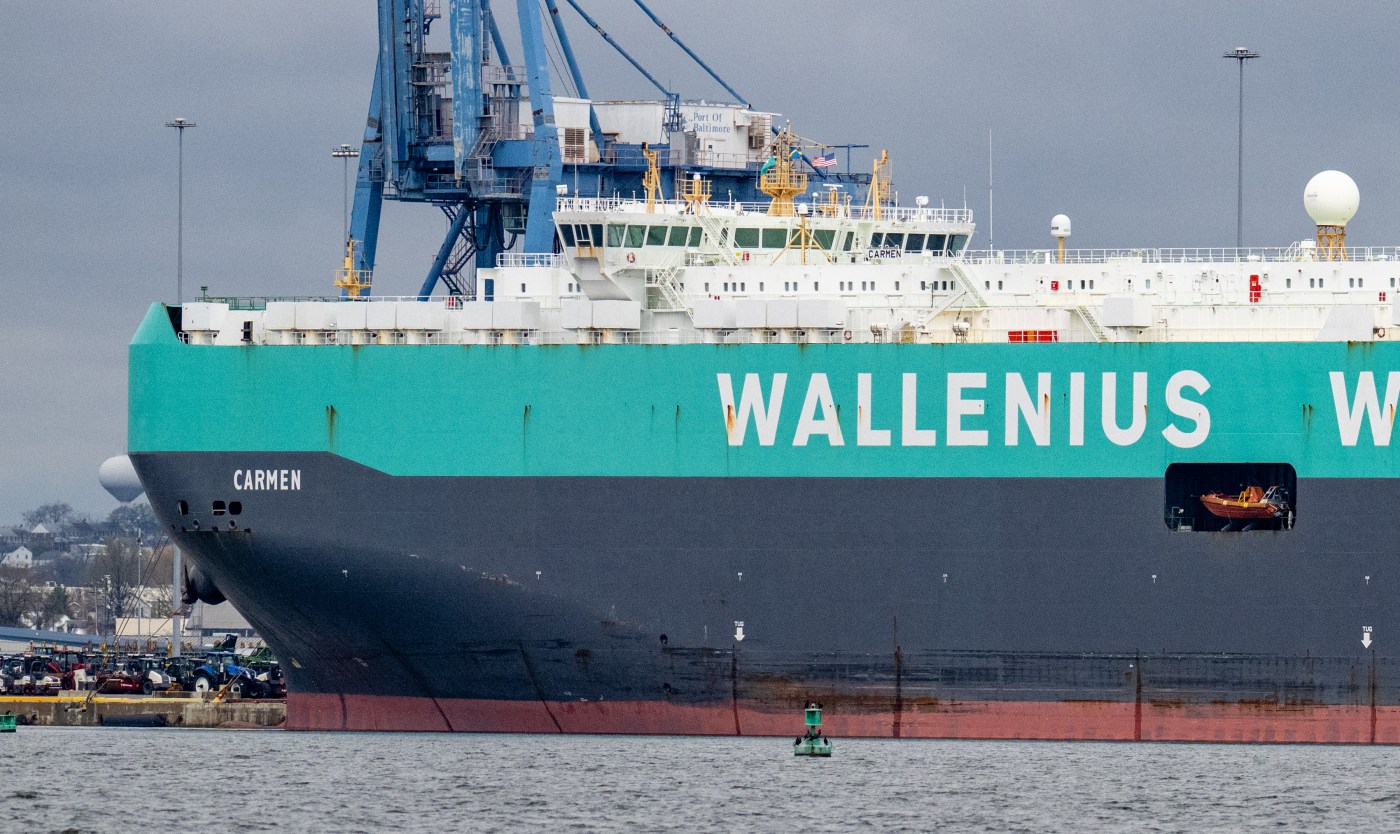
[Baltimore Sun] Key Bridge collapse: Deeper channel opens Thursday, allowing ships to leave Port of Baltimore
Ships trapped for a month behind the wreckage of the Francis Scott Key Bridge will be given a chance to leave the Port of Baltimore using an alternate shipping channel that opens Thursday morning.
The 35-foot channel will be the deepest yet of four temporary, alternate routes in and out of the port. But the new Fort McHenry Limited Access Channel, for commercially essential vessels, will stay open only through 6 a.m. Monday, or through Tuesday if weather adversely affects transit.
“The primary focus of this four-day period is to allow the ships that have remained within the Port of Baltimore since the March 26 incident to leave,” port officials said in a statement Wednesday.
The port has been blocked to most vessel traffic since the Dali freighter struck a bridge support column March 26, causing the 1.6-mile bridge to collapse and killing six construction workers.
It’s unclear how many vessels will depart. Of the 11 cargo ships docked at berths in the port, four have no “immediate” plans to depart just yet. They are part of the U.S. Maritime Administration’s Ready Reserve Force, a fleet established in 1976 to quickly supply American troops around the world. A spokesman for the U.S. Department of Transportation’s Maritime Administration said Wednesday that he knew of no immediate plans to move those ships from the port.
Of the remaining seven commercial ships, it appears based on vessel drafts that four or five of the ships would be capable of navigating the 35-foot-deep channel.
Here’s some of what we know:
— The nonmilitary vessels trapped behind the wreckage are berthed around the harbor from Seagirt Marine Terminal and the Canton industrial waterfront to a coal pier in Curtis Bay.
— Two likely need to wait before they can leave, based on their required draft depth, including the bulk carrier Klara Oldendorf, sailing under the flag of Madeira, and the coal carrier JY River, sailing under the flag of Liberia. Both need a nearly 50-foot channel to sail when loaded.
The bulk carrier Klara Oldendorf tied up at Consol Marine Terminal in the Canton Industrial Area is one of several large ships stuck in the port following the collapse of the Francis Scott Key Bridge. (Jerry Jackson/Staff)
— Others that have been stuck in port but may be able to depart include:
Palanca Rio — an oil/chemical tanker sailing under the flag of the Marshall Islands
Balsa 94 — a general cargo ship sailing under the flag of Panama
Saimaagracht — a general cargo ship sailing under the flag of the Netherlands
Carmen — a vehicle carrier sailing under the flag of Sweden
Phatra Naree — a bulk carrier sailing under the flag of Thailand
April 1, 2024: Saimaagracht, a general cargo/container ship, is moored at Dundalk Marine Terminal. It is one of several large ships stuck in the port following the collapse of the Francis Scott Key Bridge. (Jerry Jackson/Staff)
— The Carmen, owned by Wallenius Wilhelmsen, needs 37 feet of water when fully loaded but likely will be able to depart using the new channel. The Norway-based shipping line said earlier this month that it estimates a monthlong financial impact in the range of $5 million to $10 million from the Carmen being stuck in Baltimore.
“Our vessel M/V Carmen is still at berth in the port awaiting clearance to sail once the channel reopens,” that statement said. “Planned cargo operations were completed at the port prior to the bridge collapse, and the vessel and crew are ready to sail as soon as the channel is reopened.”
— The other four ships all require less draft than the 35 feet that the newly opening channel offers. The Saimaagracht needs just about every inch of that, but only when fully loaded. The Phatra Naree needs 33.5 feet when loaded; the Palanca Rio needs as many as 29 feet; and the Balsa 94 needs just 22 feet.
— The newest channel will be available along with three other temporary channels, with depths of 11, 14 and 20 feet. The new channel will be marked with lighted aids and limited to transit at the discretion of the Coast Guard’s Captain of the Port based on weather conditions.
— Vessels must be operated by a Maryland State pilot and escorted by two tugboats at speeds at or below 5 knots because of the channel’s proximity to the grounded Dali. Ships with more than 60,000 long tons of displacement will most likely not be allowed through the channel.
— After shutting down next week, the 35-foot channel will not reopen until around May 10, to allow salvage crews to begin lifting steel off the Dali and using a hydraulic grabber to clear debris from the harbor’s main 50-foot shipping channel. The Army Corps of Engineers expects to reopen the Port of Baltimore’s permanent 700-foot wide, 50-foot deep channel by the end of May.
— The first three temporary channels have been in use by smaller vessels and barges. Domino Sugar, which has a refinery on the Inner Harbor in Baltimore’s Locust Point, posted on Facebook that the sugar barge Jonathan, which regularly delivers shipments of raw sugar to the refinery, returned Wednesday using the 20-foot navigation channel.
“Thank you to the Coast Guard and the entire Unified Command who made this possible,” the manufacturer said in its post.
Baltimore Sun reporter Angela Roberts contributed to this article.
